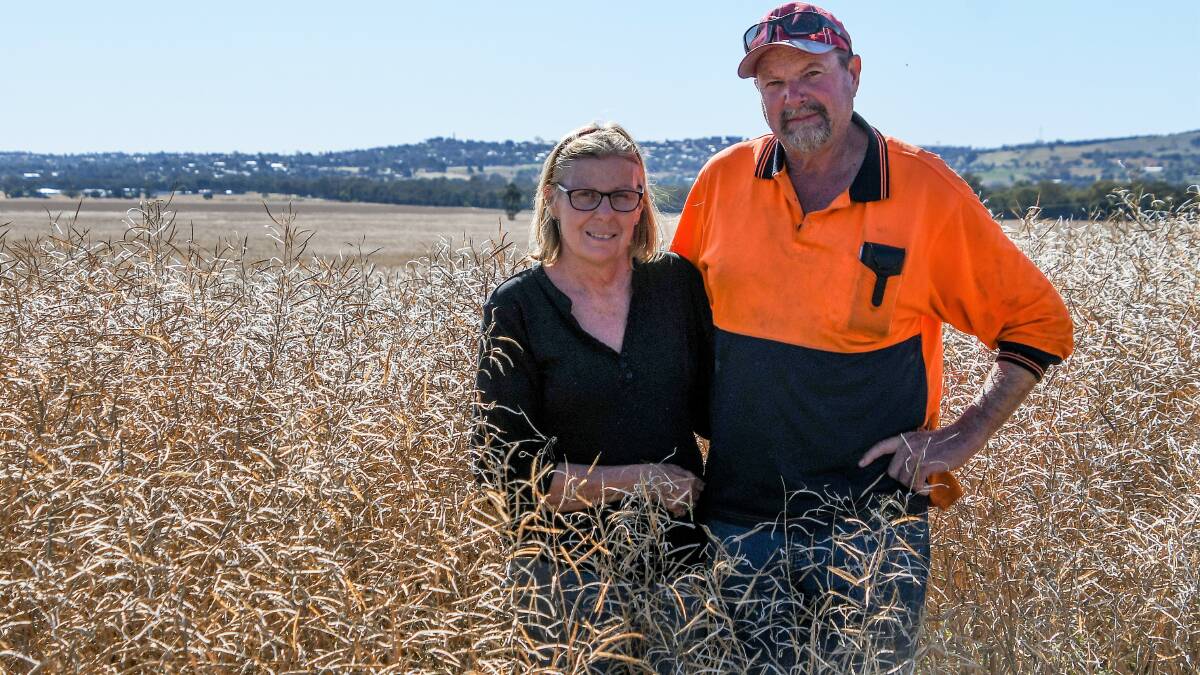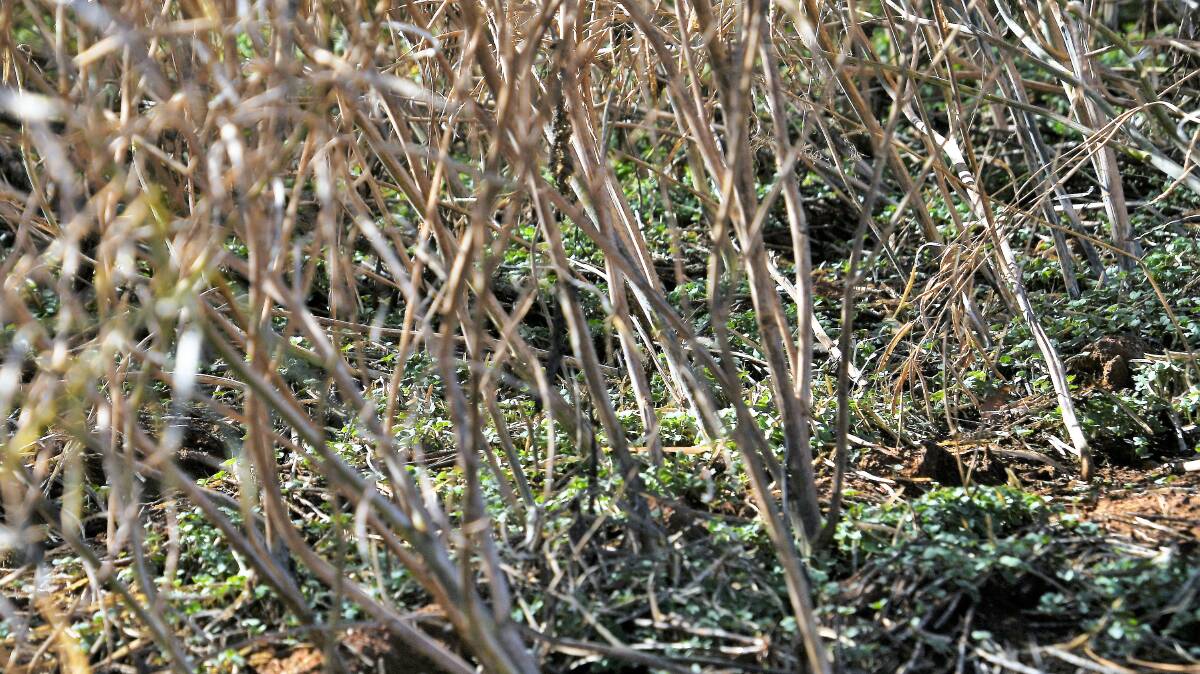
Winter croppers are holding their collective breath as harvest activity becomes frenetic with hail and rain in patches throwing cold water on what is, overall, a splendid season.
Subscribe now for unlimited access.
$0/
(min cost $0)
or signup to continue reading
Dianne and Greg Bowkett, who farm on the outskirts of Parkes, sustained a high level of damage during the hail storms last weekend.
The husband and wife team have four paddocks filled with canola, and seed pods were shattered by the hail, leaving only the empty pod casings to shine like silver in the afternoon sunlight.
The damage has resulted in much of the canola seed falling to the ground and sprouting.
Peter Yelland from PY Agronomy in Parkes said canola was the worst affected crop in the area to be damaged by the heavy rain and hail.
"The hail saw isolated damage of between 30 - 90 per cent yield loss, with canola the worst affected due to the timing (of the hail)," said Peter.
Peter said cereal crops, which mainly includes wheat and barley in the Parkes region, suffered 10 - 25 per cent damage; but only in specific areas.

Agronomist and hail assessor Emma Ayliffe, Summit Ag, has clients near Lake Cargelligo where some of the worst storm damage occurred, with 15 - 100 per cent crop damage during two storms from October 24.
"What wasn't affected at first was wiped out in the second event last weekend in most unusual circumstances. One 50 year old farmer at Neradhan had not seen hail since he moved back home at the age of 15," said Emma.
"Between eight and 12 different enterprises have been hit and not all were insured," Ms Ayliffe reported, including her own property east of the lake - farmed with her partner Craig Newham.
At a cost of 1pc of the nominated value, hail and fire insurance was regarded as cheap but its take up depended on a farmer's risk and debt profile, with those required to make loan repayments more likely to insure, she said.
"For these people they have gone through a roller coaster of emotion since the event - from saying things like 'Well, we've got more room in the silos for the rest of the crop', to 'F@#! it was going to be such a good harvest!'
DPI Technical specialist Don McCaffrey was at the opening of the new department facility in Orange this week and said his own survey of agronomists in the field showed damage from storms in late October was confined to parts of the central west with a couple crops completely wiped out and others partially affected.
In most cases it is too early to talk about how much grain has been downgraded.
"South east of Parkes appears to be some of the worst affected with up to 70 per cent yield loss in one or two crops and 15 to 20 per cent losses over a larger area," he reported.
The surrounding district had 130mm after October 20 causing lodging but not necessarily downgrading grain.

